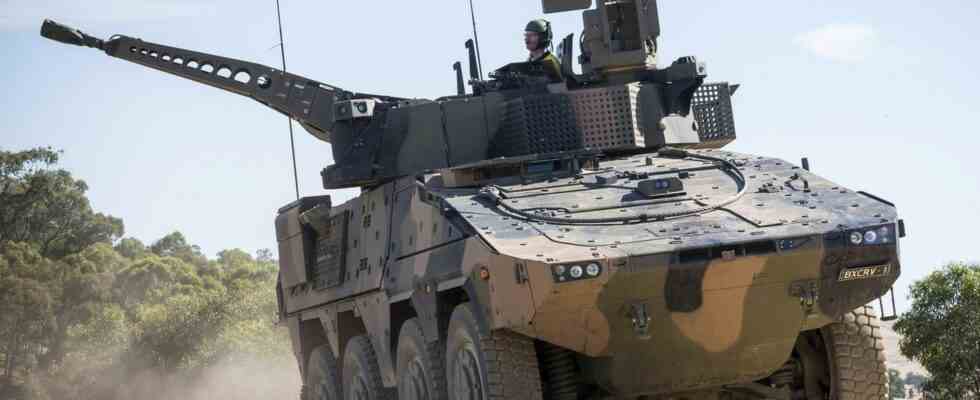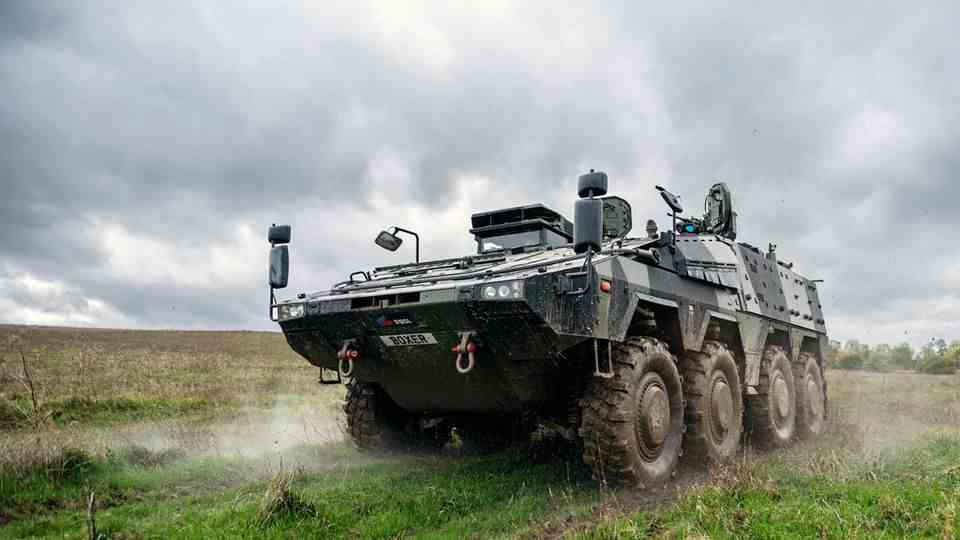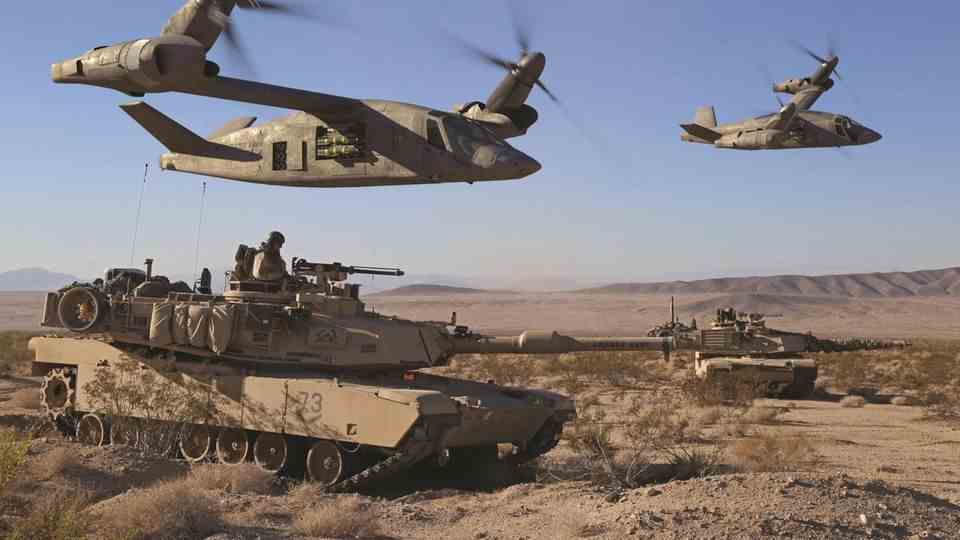German tank construction
Boxer armored vehicle – a versatile all-rounder thanks to the revolutionary mission module
Even with the 30 millimeter machine cannon, the Boxer can still take on infantrymen.
©PR
The Boxer is light, economical to maintain and very versatile due to its modular design. The armored personnel carrier variants with automatic cannon and guided missiles are the most powerful.
There is a lot of talk about heavy weapons with which the Federal Republic could help Ukraine. Even a reactivation of the Leopard I is under discussion. In addition to the grizzled battle tank, the Marder infantry fighting vehicle, which was also aged, was also discussed. The new armored personnel carriers are less in focus. One would be the Lynx industrial development, the other the Boxer armored vehicle. It is considered one of the most successful concepts of the last decades.
Eight-wheeled armored vehicle
In appearance, the Boxer is vaguely reminiscent of the wheeled tanks of World War II, such as the Puma (Panzerspähwagen Sd.Kfz. 234). With an empty weight of 25 tons, the wheeled armored vehicle is much lighter than tracked armored personnel carriers and even more so than the heavy battle tanks. However, the Boxer is relatively heavy for a wheeled tank. In addition, the vehicle offers an enormous payload of over 10 tons.
Wheeled armor has always existed. The armed forces of the Warsaw Pact countries had wheeled armored vehicles in service and after the end of the Cold War the Boxer was not the only new development. But what is revolutionary about it is the separation of a driving module and a separate mission module. The superstructures of the vehicle can be exchanged. This separation makes it possible to develop completely different structures for the chassis. The Boxer’s modular concept goes much further than the Russian development of the Armata platform, which serves as the basis for various heavy combat vehicles.
Officially, the Boxer is listed as an “armoured transport vehicle”. Depending on the structure, it can be designed as a troop carrier (APC Armored Personal Carrier) or armored personnel carrier (IFV Infantry Fighting Vehicle).
High protection with low weight
British military expert Nicholas Drummond said in an interview with the star: “In 2011 the boxer came to Afghanistan where he put on an impressive performance.” The former commander of a tank unit stated: “No German soldier was killed or injured in a Boxer. By comparison, the British Army continued to suffer casualties.” Because also because of the separation of floor groups and the module of the crew, the Boxer is far better protected than older vehicles from mines and explosive devices. “We could have used the Boxer in Afghanistan instead of other vehicles with insufficient protection.”
“The Boxer defines a new class of wheeled armored vehicle that combines exceptional off-road mobility with a high level of armored protection,” said Drummond. The impressive top speed of 105 km/h is just one indicator of the boxer’s skills.
Variant as armored personnel carrier
In addition to the transporter (APC), the medical and the command vehicle, armored personnel carriers were developed. These variants are armed with a 30mm caliber autocannon. The 30 mm Rheinmetall MK30-2 is installed in the Lance turret. For battles in built-up urban areas, the agile infantry fighting vehicle is better suited than the cumbersome and unwieldy main battle tanks that can’t even rotate the turret in narrow streets. The effect of a burst from the 30 millimeter cannon is also greater there than the effect of a single shot from a tank gun. The disadvantage of the lower armor, on the other hand, is less important these days. Even heavily protected main battle tanks are easy targets for drones and modern anti-tank guided missiles. A total of almost 1500 copies have already been built.

High level of operational skills
The development of the comparatively light wheeled armor is based on a shock. After the end of the Cold War, US Army brigades were equipped with super-heavy main battle tanks and armored Humvees. In Kosovo, and later in Iraq and Afghanistan, it was noticed that this combined two huge disadvantages. The heavy battle tanks were immobile and unusable on many roads and bridges, while most of the soldiers in their all-terrain vehicles were not protected from explosives, mortar or machine gun fire.
Wheeled tanks, on the other hand, combine high mobility, extensive protection for the crew and, depending on the equipment, comparatively high firepower.
Wheeled tank units can also get into the operational area on their own wheels. The effort for mechanics and supplies is far lower than with tracked vehicles. These require special trucks or rail connections to cover long distances. The weight of the transport truck then adds to that of the battle tank in the luggage, which further limits the number of roads and bridges that can be used. The range of a Boxer, on the other hand, is 1000 kilometers on the road. The load on the chassis of a wheeled armored vehicle is significantly lower than that of a tracked vehicle, especially on the road, so that the intervals between maintenance and repairs are significantly longer.
More models
The US Army also developed the eight-wheeled Stryker, which, however, has a conventional design and does not have the Boxer’s modular concept. The Soviet armed forces always had wheeled tanks. One of the more recent developments is the boomerang. He is significantly lighter than the Boxer, but more heavily armed.
The largest Russian tank manufacturer Uralvagonzavod, from which the Armata platform and thus also the T-14 come, started a cooperation with Renault in order to develop wheeled vehicles in addition to the tracked vehicles. The Atom was shown in this context in 2013, and it also has a modular concept like the Boxer. However, the cooperation ended without result.




